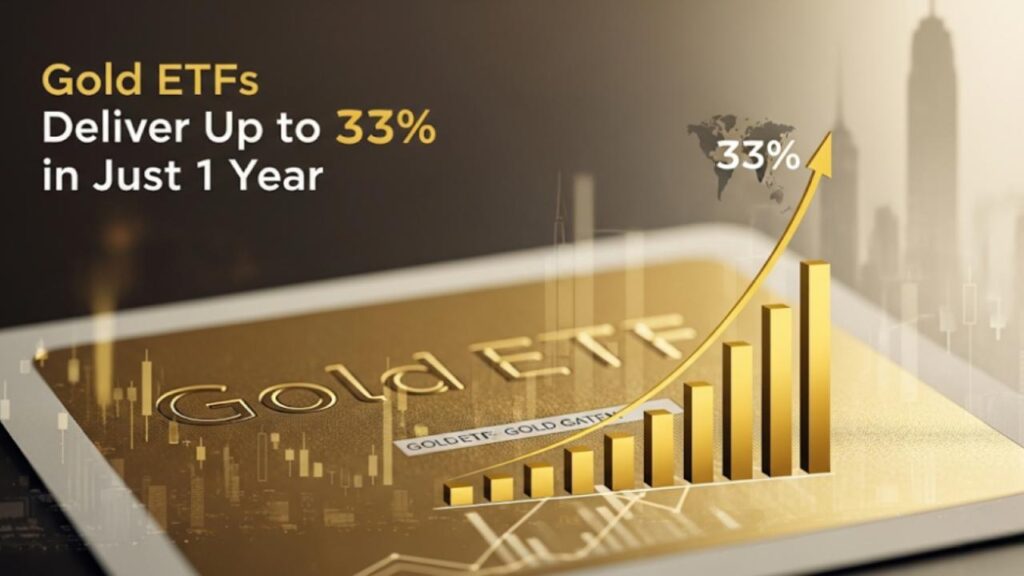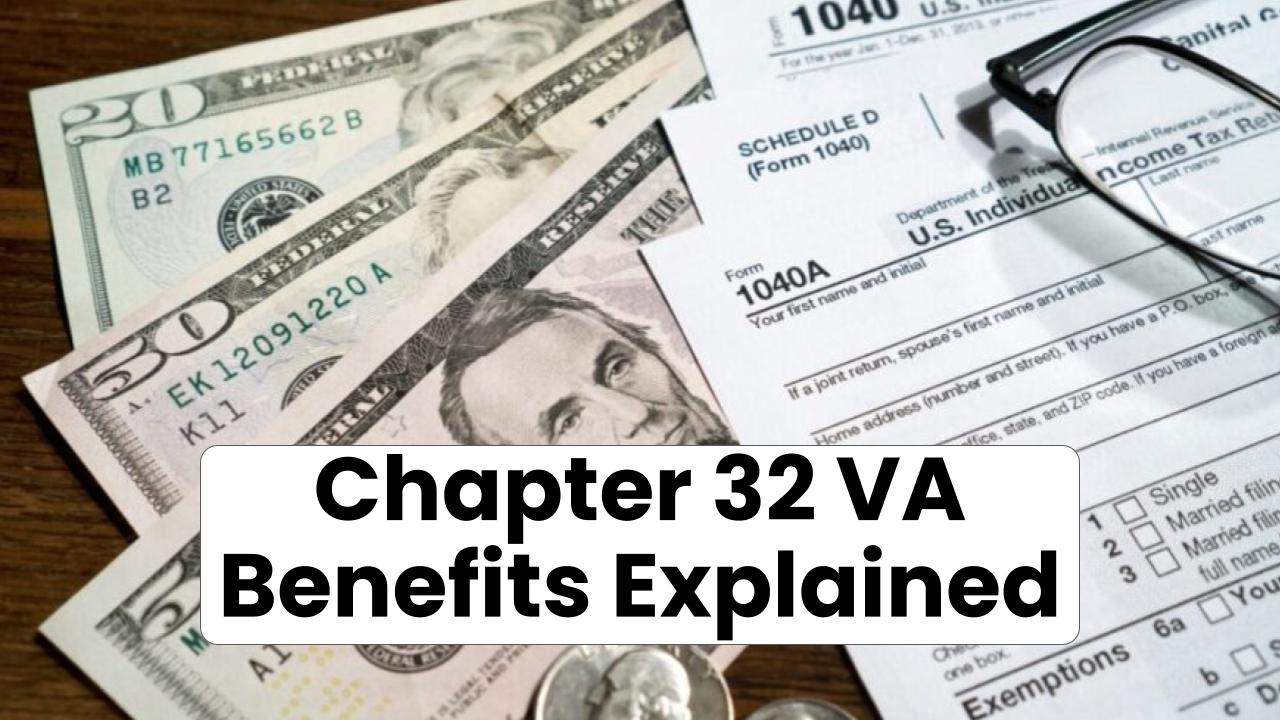Gold has always been a symbol of wealth and stability. For generations, people have sought the security of gold as a safeguard against economic uncertainty, inflation, and market volatility. In recent years, Exchange-Traded Funds (ETFs) that track the price of gold have become increasingly popular as a way for investors to gain exposure to the precious metal without the hassle of buying and storing physical gold. The best part? Gold ETFs can deliver impressive returns, sometimes even exceeding 30% in a single year.

Gold ETFs Deliver Up to 33% in Just 1 Year
| Aspect | Details |
|---|---|
| What are Gold ETFs? | Gold ETFs are investment funds that track the price of gold, traded on stock exchanges. |
| Recent Performance | Some Gold ETFs have returned up to 33% in the past year. |
| Example Investment | ₹2 Lakh invested in a top-performing Gold ETF could grow to ₹3.82 Lakh in 1 year. |
| Popular Gold ETFs in India | Kotak Gold ETF, HDFC Gold ETF, and SBI Gold ETF have delivered exceptional returns. |
| Expense Ratio | Generally between 0.3% to 0.7% for most ETFs. |
| Taxation | Long-term capital gains taxed at 20%, short-term at regular income tax rates. |
| Best For | Investors looking for gold exposure without the hassle of physical storage. |
| Investing Tip | Always review the fund’s expense ratio and historical performance before investing. |
Gold ETFs offer a simple, efficient way to gain exposure to the precious metal market, and they have proven to deliver impressive returns in recent years. Whether you’re a beginner looking to dip your toes into gold investing or an experienced investor searching for low-risk, high-reward opportunities, Gold ETFs are an excellent choice. With their ability to provide liquidity, diversify your portfolio, and deliver solid returns, these ETFs are an invaluable tool for anyone looking to add a bit of sparkle to their investment strategy.
What Are Gold ETFs and How Do They Work?
A Gold ETF is a type of Exchange-Traded Fund that tracks the price of gold. These funds are traded on the stock exchange just like stocks, but instead of shares in a company, you’re buying shares that represent ownership of gold. In other words, each share of a Gold ETF corresponds to a fixed amount of gold, usually 1 gram or a fraction of an ounce.
Why should you consider Gold ETFs over physical gold?
- Liquidity: Gold ETFs are easily traded on the stock exchange, meaning you can buy and sell them at any time during market hours.
- No storage issues: Unlike physical gold, which you need to store safely (think vaults or secure homes), Gold ETFs don’t require any physical handling.
- Diversification: Investing in Gold ETFs is an easy way to diversify your portfolio and hedge against inflation without having to buy gold bars or coins.
Gold ETFs offer an easy entry into the gold market without the complex logistics. All you need is a demat account and a stock trading account to start investing.
How Have Gold ETFs Performed in the Past Year?
Exceptional Returns on Gold ETFs
In the last year, several Gold ETFs have delivered returns of up to 33%, which is pretty phenomenal in the world of investments. For example, a ₹2 Lakh investment in a top-performing Gold ETF could have grown to ₹3.82 Lakh in just one year, with a remarkable return of 91%.
Which Gold ETFs Performed Best?
Several Gold ETFs in India have outperformed the market in the past year. These funds have had strong returns, making them a popular choice for many investors. Here are some of the standout performers:
- Kotak Gold ETF – 33% return
- LIC MF Gold ETF – 32.82% return
- HDFC Gold ETF – 32.12% return
- UTI Gold ETF – 32% return
- Axis Gold ETF – 32.35% return
These ETFs represent the top-performing funds that track gold prices, making them an ideal choice for those looking for a relatively low-risk investment with high returns. The beauty of Gold ETFs is that they combine the safety of gold with the ease of trading stocks.
Practical Steps to Invest in Gold ETFs
If you’re ready to jump into the world of Gold ETFs, here’s how you can get started:
1. Open a Demat and Trading Account
To invest in Gold ETFs, you’ll need a demat account and a trading account with a broker. These accounts allow you to hold your ETF units digitally and facilitate transactions.
- Choose a reliable broker like Zerodha, Upstox, or HDFC Securities.
- Ensure the broker offers access to ETFs on the Indian stock exchange (NSE/BSE).
2. Select the Right Gold ETF
Not all Gold ETFs are created equal, so it’s essential to choose one with strong historical performance and a reasonable expense ratio. For example, Kotak Gold ETF, which returned 33% in the last year, may be an excellent option for you.
- Look at the expense ratio: This is the cost charged by the fund for managing your money. A lower expense ratio means more money in your pocket.
- Consider the liquidity: More liquidity means you can buy and sell without causing a significant price change.
3. Decide Your Investment Amount
Once you’ve selected your Gold ETF, decide how much you want to invest. Whether it’s ₹10,000 or ₹2 Lakh, you can start with an amount that feels comfortable. Gold ETFs allow you to start with as little as ₹500.
4. Track the ETF’s Performance
After purchasing your Gold ETF, keep an eye on its performance. Most brokers will provide an easy way to track your investment. It’s also a good idea to monitor gold prices globally, as they directly impact the performance of your ETF.
Taxation on Gold ETFs
Understanding the tax implications is crucial when investing in Gold ETFs. Here’s how taxation works:
- Short-term capital gains (STCG): If you sell your Gold ETF within 36 months, any profit will be taxed according to your income tax slab.
- Long-term capital gains (LTCG): If you hold the ETF for more than 36 months, the profit is taxed at 20% with the benefit of indexation (adjusting the cost of the investment to inflation).
This means that if you’re holding for the long term, you benefit from lower taxes, which makes Gold ETFs an attractive option for those looking to build wealth over time.
FAQs about Gold ETFs
1. Are Gold ETFs safe investments?
Gold ETFs are relatively safe as they track the price of gold, which is a stable commodity. However, like any investment, they are not risk-free and can be affected by market fluctuations.
2. Can I invest in Gold ETFs through SIP (Systematic Investment Plan)?
Yes, many Gold ETFs allow for investments through SIP, which means you can invest a fixed amount regularly (monthly/quarterly), just like mutual funds.
3. How do I sell Gold ETFs?
Selling Gold ETFs is as easy as buying them. You can sell them through your trading account during market hours, just like stocks.
4. Are Gold ETFs a good hedge against inflation?
Yes, Gold ETFs are often seen as a hedge against inflation because gold traditionally holds its value well in inflationary times.








